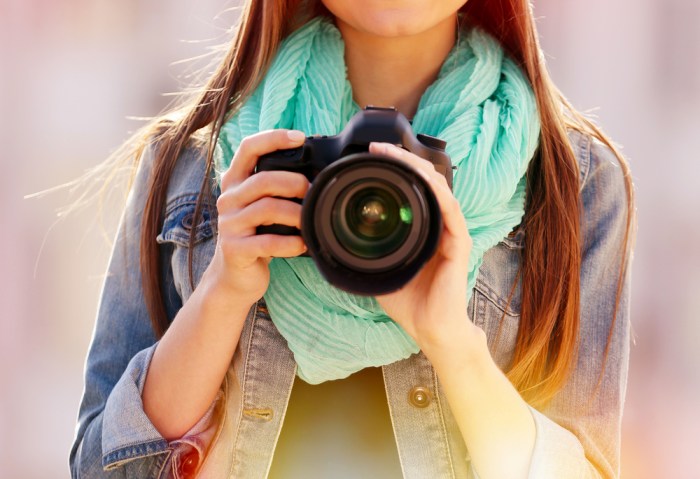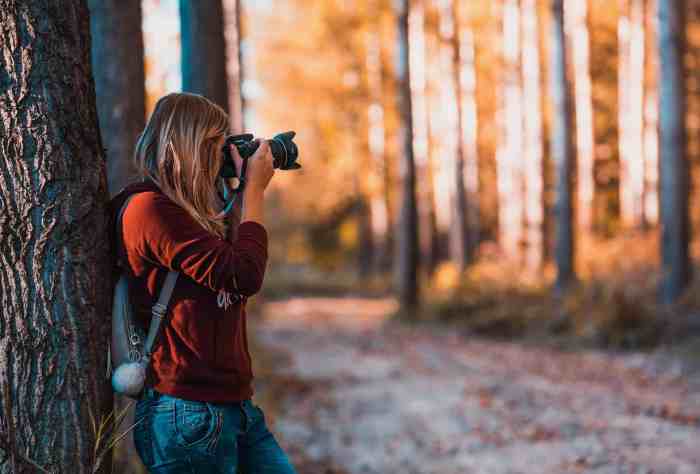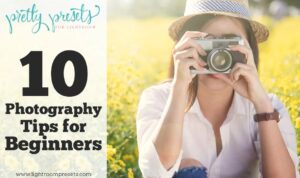Photography Tips for Beginners takes center stage as we dive into the world of capturing moments with style and finesse. Get ready to level up your photography game with these essential insights!
Whether you’re just starting out or looking to refine your skills, this guide will equip you with the knowledge needed to create stunning visuals that stand out.
Importance of Photography Tips for Beginners
Beginners in photography need guidance to navigate the complex world of capturing images. Without tips and tricks, they may struggle to understand the technical aspects, composition, and lighting required for stunning photographs.
Benefits of Following Tips
By following photography tips, beginners can improve their skills and progress faster in their photographic journey. Tips provide valuable insights and techniques that can enhance the learning process and help beginners avoid common mistakes.
- Learning Exposure: Tips on understanding exposure settings like aperture, shutter speed, and ISO can help beginners capture properly exposed images without overexposure or underexposure.
- Composition Techniques: Tips on composition, such as the rule of thirds or leading lines, can help beginners create visually appealing and well-balanced images.
- Lighting Tips: Understanding lighting and how to work with natural or artificial light can greatly improve the quality of photographs. Tips on utilizing light effectively can transform ordinary shots into extraordinary ones.
Essential Equipment for Beginner Photographers
As a beginner photographer, having the right equipment is essential to kickstart your photography journey. Here are some must-have items to consider:
1. Camera
Investing in a good quality camera is the first step towards capturing stunning images. While DSLR cameras are popular among photographers, mirrorless cameras are also a great option for beginners. Look for models with user-friendly features and manual settings to enhance your skills.
2. Lens
A versatile lens is crucial for capturing different types of shots. A standard zoom lens (18-55mm) is a great starting point for beginners as it offers a range of focal lengths for various situations. Consider investing in a prime lens (50mm) for better image quality and creative shots.
3. Tripod
A sturdy tripod is essential for shooting in low light conditions, long exposures, or capturing sharp images. Look for lightweight and portable tripods for easy transportation during outdoor shoots.
4. Memory Cards
Having extra memory cards is important to ensure you never run out of storage space while shooting. Opt for high-speed cards with ample storage capacity to accommodate RAW image files and videos.
5. Camera Bag
A durable camera bag is necessary to protect your gear from dust, moisture, and accidental bumps. Choose a bag with padded compartments to safely store your camera, lenses, and accessories.
6. Cleaning Kit
Keeping your gear clean is essential for maintaining optimal performance. Invest in a camera cleaning kit that includes a lens cloth, blower brush, and cleaning solution to remove dust and smudges from your equipment.
7. External Flash
An external flash can enhance your photos by providing additional lighting in low light situations or creating more dynamic lighting effects. Consider budget-friendly options that are compatible with your camera model.
8. Remote Shutter Release
A remote shutter release allows you to trigger the camera without touching it, reducing the risk of camera shake. This is especially useful for long exposures, time-lapse photography, or self-portraits.
9. Reflectors
Reflectors are versatile tools for manipulating light and filling in shadows in your photos. Consider investing in a budget-friendly reflector kit with different colors (white, silver, gold) to enhance the quality of your outdoor portraits.
10. Editing Software
Post-processing is an essential part of photography, and having editing software like Adobe Lightroom or Photoshop can help you enhance and fine-tune your images. Look for student discounts or free alternatives to manage your budget effectively.
Understanding Camera Settings

Understanding camera settings is crucial for beginner photographers to take control of their images. By mastering key settings like ISO, aperture, and shutter speed, you can enhance the quality of your photos and unleash your creativity.
ISO
- ISO measures the sensitivity of your camera’s sensor to light.
- A higher ISO is ideal for low-light conditions, but it can introduce noise or grain to your photos.
- Lower ISO settings are best for bright lighting situations to maintain image quality.
Aperture
- Aperture controls the amount of light entering the lens.
- A wider aperture (lower f-stop number) allows more light and creates a shallower depth of field.
- A smaller aperture (higher f-stop number) lets in less light, resulting in a larger depth of field.
Shutter Speed
- Shutter speed determines how long the camera’s shutter remains open to capture light.
- A fast shutter speed freezes motion, while a slow shutter speed creates motion blur.
- Adjusting shutter speed is crucial for capturing fast-moving subjects or long-exposure shots.
Composition Techniques for Beginners

When it comes to photography, composition plays a crucial role in creating visually appealing images. As a beginner, understanding and implementing basic composition techniques can significantly enhance the quality of your photos.The rule of thirds is a fundamental principle in composition that involves dividing your frame into a grid of nine equal sections using two horizontal and two vertical lines.
Placing your subject or key elements along these lines or at their intersections can create a more balanced and visually interesting composition. Remember, it’s not about placing your subject in the center of the frame all the time!
Rule of Thirds and its Significance
- Divide your frame into a 3×3 grid to guide your composition.
- Place key elements along the gridlines or at the intersections for a more dynamic composition.
- Helps create balance and visual interest in your photos.
Framing, Leading Lines, and Symmetry
- Framing: Use elements in your environment to frame your subject and draw focus towards it.
- Leading Lines: Utilize natural lines in your scene to lead the viewer’s eye towards the main subject.
- Symmetry: Look for symmetrical patterns or reflections to create a sense of balance in your composition.
Tips for Creating Visually Appealing Photographs Through Composition, Photography Tips for Beginners
- Experiment with different angles and perspectives to find the most interesting composition.
- Consider the background and foreground elements to ensure they complement your main subject.
- Keep it simple and avoid cluttering your frame with unnecessary distractions.
- Practice observing the world around you with a compositional eye to develop your skills over time.
Lighting Tips for Better Photos: Photography Tips For Beginners
Lighting plays a crucial role in photography, as it can make or break a shot. The way light interacts with your subject can dramatically affect the mood, tone, and overall quality of your photos.Natural light, as the name suggests, comes from natural sources such as the sun or moon. It is versatile and can create soft, flattering light when used correctly.
On the other hand, artificial light is man-made and includes sources like studio lights, flash units, or even household lamps. Artificial light gives you more control over the intensity and direction of light, but can sometimes create harsh shadows if not diffused properly.
Using Light to Enhance Photographs
- Golden Hour: Make use of the soft, warm light during the golden hours of sunrise and sunset for stunning outdoor portraits.
- Diffused Light: Avoid harsh shadows by diffusing light sources or shooting on overcast days for soft, even lighting.
- Backlighting: Experiment with backlighting to create a halo effect around your subject or silhouette them against a bright background.
- Fill Light: Use reflectors or fill flash to fill in shadows and balance out exposure in high-contrast scenes.
Editing Basics for Beginners
Editing plays a crucial role in enhancing the quality of your photographs. It allows you to adjust colors, contrast, brightness, and more to make your images stand out. For beginners, getting started with editing might seem overwhelming, but with the right software and basic techniques, you can quickly improve your photos.
Introduce Beginner-Friendly Editing Software
When it comes to editing software, there are several beginner-friendly options available. Some popular choices include:
- Adobe Lightroom: Known for its user-friendly interface and powerful editing tools.
- Photoshop Elements: A simpler version of Adobe Photoshop with essential editing features.
- Canva: Great for beginners looking to create graphic designs and make quick edits.
Importance of Post-Processing in Photography
Post-processing is essential for transforming your raw images into polished photographs. It allows you to correct exposure, white balance, and other aspects that may not have been perfect when you captured the shot. Editing can also help you express your creative vision and style.
Basic Editing Techniques for Beginners
As a beginner, focus on mastering these basic editing techniques:
- Adjusting exposure and contrast to enhance the overall look of your photos.
- Correcting white balance to ensure accurate colors in your images.
- Cropping and straightening to improve composition and remove distractions.
- Applying selective edits to specific areas of your photo for targeted enhancements.
